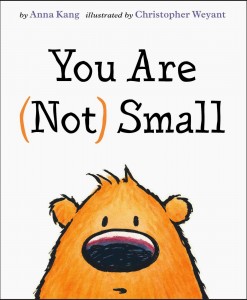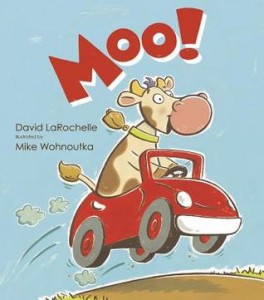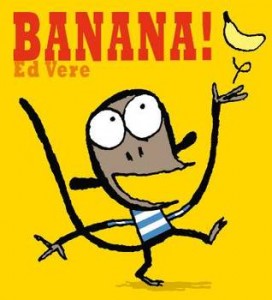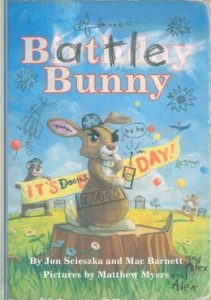The winner is: You Are (Not) Small!
 Happy Book Award Season! Many of us look forward to the annual announcement of the Caldecott and Newbery Medal Awards from the American Library Association, but the one that made me hoot and holler loudest this year was the announcement of the winner of the Theodor Seuss Geisel Award for the most distinguished beginning reader book: You Are (Not) Small written by Anna Kang and illustrated by Christopher Weyent.
Happy Book Award Season! Many of us look forward to the annual announcement of the Caldecott and Newbery Medal Awards from the American Library Association, but the one that made me hoot and holler loudest this year was the announcement of the winner of the Theodor Seuss Geisel Award for the most distinguished beginning reader book: You Are (Not) Small written by Anna Kang and illustrated by Christopher Weyent.
Fantastic “easy” reader? Check.
Great for Readers’ Theater? Check.
Funny ending? Check.
Works for a ton of tie-in lessons? Check.
Story and art that kids will want to return to again and again? Big ol’ check!
Finding mentor texts on expressing opinion, giving reasons, persuasion, etc. isn’t easy for the younger crowd, so if you teach kindergarten – third grade, grab You Are (Not) Small. (It’s also fantastic for a print concepts lesson on italics, ellipses, underlining, for a lesson on reading with expression, for a math/science tie-in for comparing items by size, but I digress.)
The two main characters in this book express clear, opposite opinions. The orange fuzzy creature tells the purple fuzzy creature, “You are small.” The purple fuzzy disagrees, “I am not small. You are big.” Back and forth they go, giving reasons for their opinion by comparing themselves to other fuzzy creatures. It’s so simple it’s brilliant, and the ending will get everyone giggling.
After reading this to a first grade class, I told them, “You are small.” Uproar ensued. “No, we aren’t!”
“Yes, my opinion is that you are small, and my reason is that you are all smaller than this bookshelf.”
“But we’re bigger than the chair!” “Yes, and we’re taller than the desk!”
This led to an easy quick-write session: choose an opinion statement of “I am big” or “I am small” and write three reasons to support your opinion. Go!
So grab You Are (Not) Small by Anna Kang and Christopher Weyant, and check out other winners of the Theodor Seuss Geisel Award. The Caldecott and Newbery Medals are wonderful, but they aren’t the only awards given by ALA, so explore lists like the Coretta Scott King Awards and treat yourself to award-winning books.
Read More
Moo!
 It’s the beginning of a new school year and we want all our students to start off feeling successful. If you have kids that are beginning or struggling readers, here is a book that almost everyone will be able to read confidently: Moo! written by David LaRochelle and illustrated by Mike Wohnoutka.
It’s the beginning of a new school year and we want all our students to start off feeling successful. If you have kids that are beginning or struggling readers, here is a book that almost everyone will be able to read confidently: Moo! written by David LaRochelle and illustrated by Mike Wohnoutka.
This is no boring “baby book”. The humor of this one works for a wide range of kids, especially if you model reading it aloud with great expression. I read this one for an all-ages Stories in the Park event this summer and even the grown-ups were chuckling. Even though the book consists almost entirely of one word, the punctuation, the text formatting, and the pictures determine how the word is read. So not only is it a bull’s-eye for the Core Standard of Fluency, it works beautifully into a lesson on punctuation and Print Concepts.
Read Moo! aloud to your students and, once the giggles die down, talk about how you knew how to read the same word differently. For example, look at this page from the book:  There are moos in italics, in bold font, in all capitals and these differences, along with the punctuation, help determine how to read this page. Share the book again, asking different students to use the text and picture clues to help them read the page with feeling. Now you’ve got a lead-in to a great writing exercise. Brainstorm two lists: a list of punctuation and text styles that were used to change the meaning of “moo” so many times, and a list of animals that make a sound. Kids can write and draw about an animal that goes off on an adventure (using punctuation and formatting to show meaning) and they’ll only have to worry about spelling one word. Fun!
There are moos in italics, in bold font, in all capitals and these differences, along with the punctuation, help determine how to read this page. Share the book again, asking different students to use the text and picture clues to help them read the page with feeling. Now you’ve got a lead-in to a great writing exercise. Brainstorm two lists: a list of punctuation and text styles that were used to change the meaning of “moo” so many times, and a list of animals that make a sound. Kids can write and draw about an animal that goes off on an adventure (using punctuation and formatting to show meaning) and they’ll only have to worry about spelling one word. Fun!
Bananas for Early Readers!
 Happy April, everyone! A teacher-friend asked me for super-simple books for readers who are wrestling with her lowest-leveled texts. I shared BANANA! by Ed Vere and the kids went ape. The facial expressions on the two monkeys are so engaging, and the text is limited to two words: “banana” and “please” with either question marks or exclamation points. As I read, I pointed out how the exclamation mark and question mark change the way we read the words. (Print Concepts mini-lesson? Check!)
Happy April, everyone! A teacher-friend asked me for super-simple books for readers who are wrestling with her lowest-leveled texts. I shared BANANA! by Ed Vere and the kids went ape. The facial expressions on the two monkeys are so engaging, and the text is limited to two words: “banana” and “please” with either question marks or exclamation points. As I read, I pointed out how the exclamation mark and question mark change the way we read the words. (Print Concepts mini-lesson? Check!)
Banana! is perfect for readers’ theater. After reading the book to your students, split them into pairs. The kids can make their own monkey masks or hats or puppets. Give students time to practice their lines (nailing that Common Core State Standard of Fluency). Then, kids take turns performing for the class, reading their lines as you hold up the book and turn the pages.
You can make a silly spin-off book called “Apple!” Take photos of two teachers arguing over who gets to eat the apple and lay them out like Ed Vere’s pages. You can make lots of little class books like this if you have a digital camera – let your students be the stars of the book, arguing over and eventually sharing an orange, or a pencil, etc. Your students will go, well, bananas for this book!
I’ll be in Elizabeth, New Jersey this month to talk about the best books to teach preschool and kindergarden reading standards. Next month, I’m the keynote speaker for an early literacy conference in Michigan and I have two presentations to public librarians on Common Core State Standards. Please keep your fingers crossed for ice-storm-free travel days!
Read More
Battle Bunny
 Happy February! This time last year, I was celebrating the sale of my first picture book, GROUNDHOG’S DILEMMA, to Charlesbridge. This February 2nd, I came home from a week of presenting seminars to a cool surprise: my husband (author/illustrator Matt Faulkner) just received the official layout of the book so he can begin making the art! Woohoo!
Happy February! This time last year, I was celebrating the sale of my first picture book, GROUNDHOG’S DILEMMA, to Charlesbridge. This February 2nd, I came home from a week of presenting seminars to a cool surprise: my husband (author/illustrator Matt Faulkner) just received the official layout of the book so he can begin making the art! Woohoo!
Of course, I won’t see any of the art until it’s passed my editor’s approval. In the publishing world, authors don’t get to communicate with the illustrators. I just happen to live with my illustrator. And because I’d like to continue living with him, I can’t watch over his shoulder as he draws my characters, because I’d be tempted to give helpful comments like, “Maybe his cheeks should be a little chubbier, and maybe you should….” So Matt will make his magic in his studio and I will try not to peek until my editor says I can!
Those of you came to my seminars last week have already seen my new favorite book: Battle Bunny written by Jon Scieszka and Mac Barnett (and Alex) with pictures by Matthew Myers (and Alex). Kids who love the humor of Captain Underpants will go nuts for this book, and you can use it to teach the Core Standard of Craft & Structure.
When you show students the cover, they might think this book has been defaced. Well, yes and no. Battle Bunny is supposed to look drawn on and scribbled over – that’s the brilliant premise of this book. A kid named Alex is supposedly given a sappy-sweet book called “Birthday Bunny” from his Gran-Gran. Alex transforms the book by crossing out words, writing his own words, and adding crazy details to the pictures. For instance, the line “Birthday Bunny started on his path, hopping through the trees” is rewritten as “Battle Bunny started on his Evil Plan, chopping through the trees” and we see the cute birdie in the tree now has a speech balloon saying “You will fail!”
Revising! Editing! Transformative writing! After you’ve talked with your students about the authors’ and illustrator’s craft of word choice, art design, etc. that add layers to the book, go to mybirthdaybunny.com. There’s a free lesson plan for teachers, and I love that you can print off the “original” sweet version of the story for kids to change. If you are super-brave, buy some beat-up books from the library’s used book sale or from a thrift store and let your students revise them. Just make it clear which books can be written in and which of your books are off-limits!
Read More






